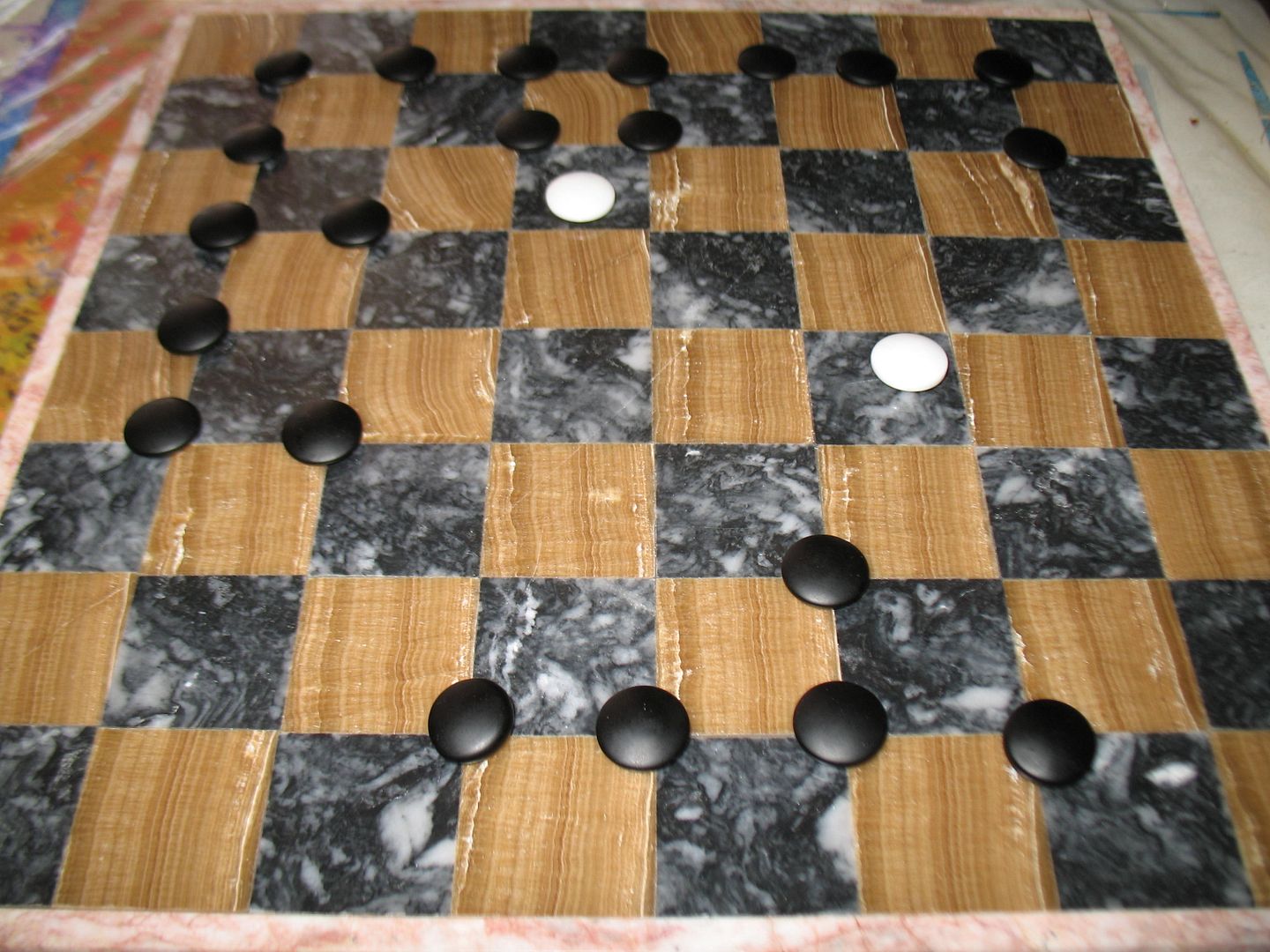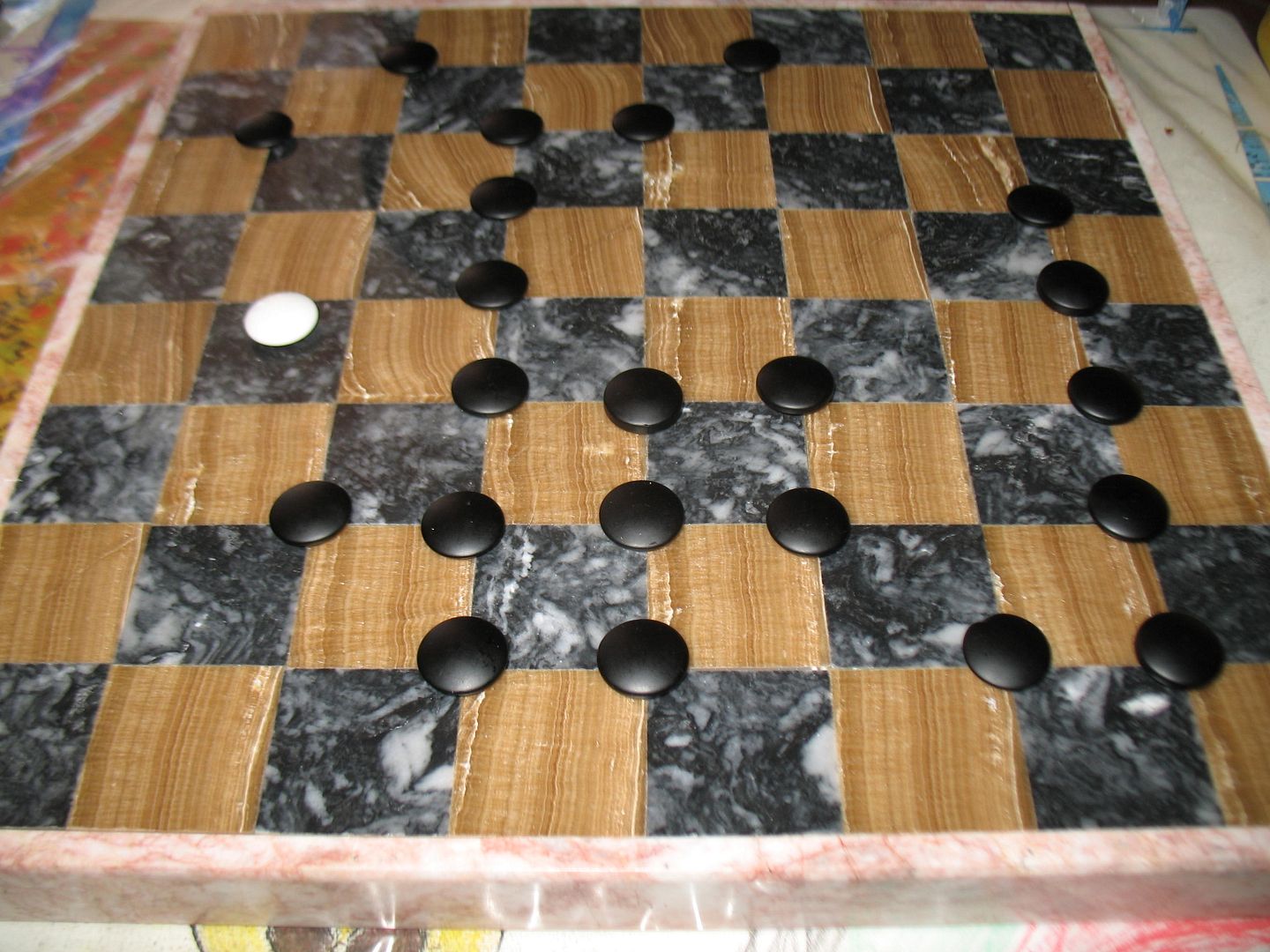 “I like the notion that two players might be sharing the same map and moving their counters on the same map, but in effect they’re playing two different games. I like asymmetry of methods, asymmetry of functions and especially the asymmetry of objectives.” — Brian Train
“I like the notion that two players might be sharing the same map and moving their counters on the same map, but in effect they’re playing two different games. I like asymmetry of methods, asymmetry of functions and especially the asymmetry of objectives.” — Brian Train
You don’t always have time for a huge wargame. (Not everyone is blessed with a son that is always game for a few hours of Federation Commander or Commands & Colors: Ancients.) There’s a need as well for simpler games that are easy to teach. But more so, as the nature of war evolves over time, there’s a need for new games that convey the principles that underlie those changes. After all, if chess somehow encapsulates the chivalry, courtesy, and fairness of a medieval battlefield, so too does backgammon express the wisdom of traveling through dangerous territory in pairs. But neither of those have much to do with recent conflicts in either Vietnam or Afghanistan.
That’s where Guerrilla Checkers comes in. (You can find the rules here.) On one side, there is the Counter-Insurgent player. They’re few in number, but powerful. They win by killing their opponents en masse. Opposing them are the guerrillas. They are legion, but fairly weak when considered on a piece-by-piece basis. They kill the elite COIN troops by infiltration, creating traps, surrounding their foes and cutting them off from any conceivable escape.
If you’ve read R. Wayne Schmittberger ‘s New Rules for Classic Games, you’ll agree that there’s nothing in there quite like this. Of all the many chess and checkers variants in that tome, none of them come close to exploring asymmetrical game design in this fashion.
- Both side’s pieces are played on the same game board, but the COIN pieces remain inside the squares while the guerrillas are played on the vertexes.
- COIN pieces kill guerrillas by jumping one or more of them at once like a king in checkers. Guerrillas kill COIN pieces by occupying all four vertexes that surround them.
- Guerrilla pieces can’t even move, but are placed on the board two at a time. COIN pieces can move, but do not get any reinforcements.
- Guerrilla side wins by wiping out the COIN pieces. The COIN side wins by holding out long enough that the Guerrillas run out of materiel.
It may be hard to imagine how this can work until you you play it yourself, but here’s a few common situations that emerge in the game.

In the above position, the two adjacent COIN pieces have been infiltrated! Only one can escape, so the COIN player may as well do as much damage as he can here. He has a sequence of eight jumps that he can take that will fairly well clear the board of guerrillas!
The next board position shows a guerrilla player that has just made a mistake:

The guerrilla player in the above board has just placed two guerrillas next to a COIN piece. He thinks he is threatening him when in fact the COIN player can jump four or five guerrilla pieces and still end up in a safe square.
While the above tactics are ones that players will learn right away, the next board position contains something much more subtle.

This is a game that ended with a guerrilla victory. The interesting thing about it is that the COIN piece is not directly threatened. If it moves to either of the board edge squares, it will be captured. (The board edge are effectively controlled by permanent guerrillas– think of it as jungle maybe.) If it moves into either of the other two squares, it is walking straight into an ambush as there are two or three guerrillas already surrounding each of those two destinations. The COIN piece must move, so this is the end of him. It has nowhere safe to go!
This is an example of how sometimes it’s better to engulf the COIN player, gradually restricting his options to a place where he has nothing good he can do. It’s fun! But it takes time to master. With two players new to the game, the COIN player is liable to win the first couple of games, because the guerrilla player will make one blunder after another. Once the guerrilla player gets the idea, though, the COIN player will eventually get wiped out every time. For competitive play, then, players will play once as each side. Whoever has the most guerrilla pieces left in reserve after the victory is the winner of the set.
Watching my son slowly master the guerrillas’ tactics over the course of five or six games was a very enjoyable experience for me. I’d wondered if the challenge was just too much for him, but the game gives enough sense of progress that it’s hard to actually lose heart. He went from leaving me three COIN pieces at the end in his first game, then two more sessions where I was left with two. The next game I only had one COIN piece at the end and he immediately asked for another round.
See… playing this game not only made him more and more cunning as he continued to play. It also gave him a desire to utterly vanquish his opponent.
And that’s a beautiful thing.
Reminds me a bit of the Nepalese checkers game Bagh Chal; there, one player places out livestock tokens trying to hem in and trap the other player’s “tigers” while avoiding being eaten.
Brian first showed me the game when we met in London in 2014. We played over drinks. I tried to cover my incompetence by proposing variants. What I like best is how closely the game keeps to its designer’s intent: insurgents have limited resources; counterinsurgents are fast and powerful.
Thanks Jeffro, I am glad you and your son enjoyed playing the game.
Besides the physical version, a friend made a beta of an application that allows play of the game on Android devices – no AI but it looks nice and can’t get more portable than that.
Anyone who’s interested can ask me for it.
After I thought of this game I spent quite a while poking around to see if anyone had invented this already.
As far as I can tell, no one had.
Bagh Chal and maybe Fox & Geese are thematically similar, but not close enough.
I highly recommend that when you play, you play a set of two games, switching roles.
The point of the game is to appreciate both sides’ differences.
Thank you!
Quite the shortest set of game rules I’ve ever written; about 360 words.